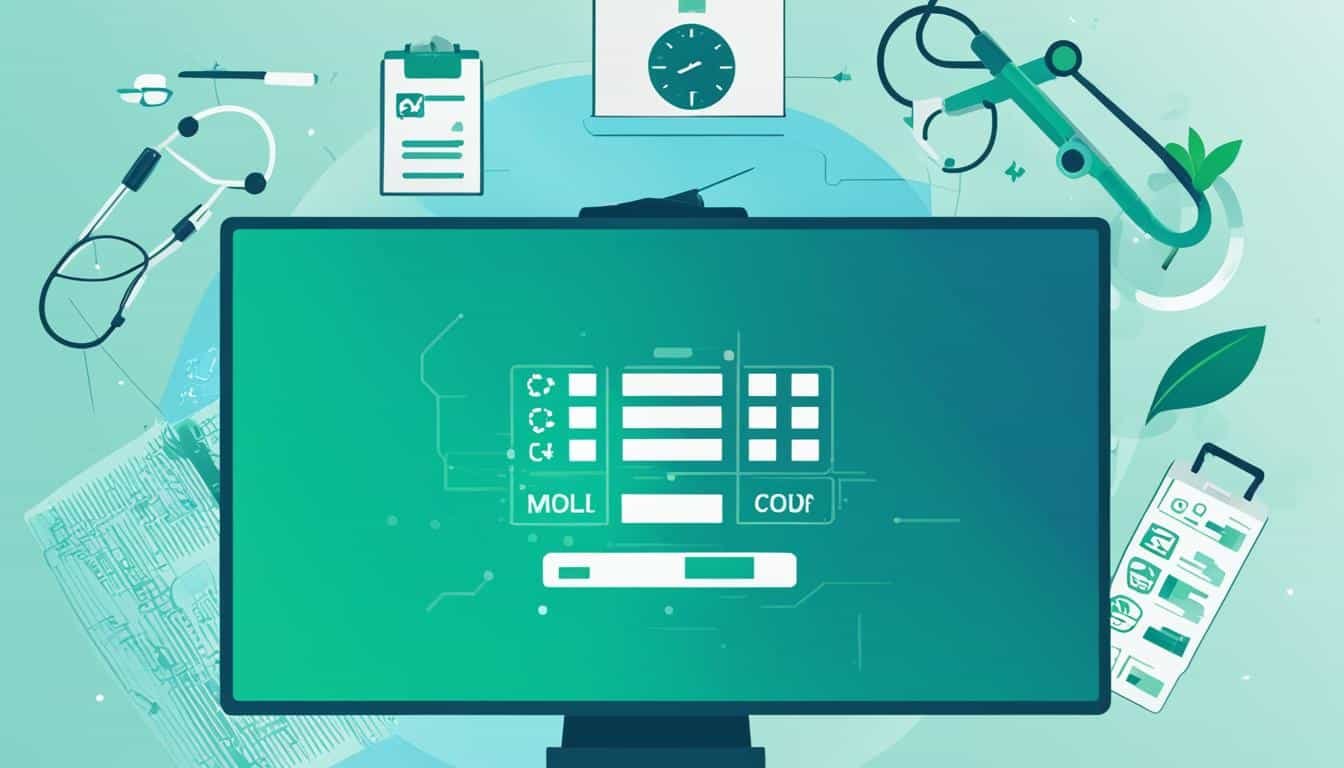Planning a high school course of study can seem overwhelming with the wide range of options available. From core academic departments to elective courses, there are countless choices to consider. To help navigate this process, high school students can rely on the course of study guide, a valuable resource provided by school counselors.
The course of study guide contains essential information about high school curriculum, programs, and requirements. It offers guidance on selecting academic courses, including core subjects, elective courses, college preparatory courses, and career-focused courses. By consulting the guide, students can make informed decisions that align with their strengths, interests, and future goals.
Whether you’re aiming for a well-rounded education or specializing in a particular field, the course of study guide is your roadmap to success. It provides placement criteria, prerequisites, and program offerings, helping you tailor your high school experience to your unique aspirations. With this guide in hand, you can confidently choose courses that are challenging yet manageable, setting a strong foundation for your academic journey.
Key Takeaways:
- High school course of study guides help students navigate the diverse range of academic options available.
- These guides provide essential information on core subjects, elective courses, and college preparatory programs.
- Consulting the course of study guide ensures informed decision-making based on individual strengths, interests, and goals.
- By following the guide, students can create a well-rounded education or focus on specialized career pathways.
- The course of study guide is a resource that enables students to make academically and personally meaningful course selections.
Planning High School Courses: 8th to 9th Grade Transition
The transition from 8th grade to 9th grade is a critical time for students as they embark on their high school journey. This period marks an important milestone in their academic development, where strategic course selection becomes crucial in shaping their future endeavors. To ensure a smooth transition, collaboration among middle school counselors, 8th grade teachers, high school program leaders, and students and parents is essential.
During this phase, students are encouraged to select courses that align with their academic interests and future goals. By carefully considering their strengths, passions, and aspirations, students can make informed decisions that allow them to explore various program offerings available to them in high school.
To support students and parents in this transition, a range of activities and resources are provided. Bridge activities and orientations are organized to acquaint students with the high school environment and curriculum, helping them navigate the new challenges they may encounter. Program comparisons offer an opportunity for students and parents to understand the different academic and extracurricular opportunities available, enabling better-informed decision-making.
By engaging in this collaborative and comprehensive planning process, students can pave the way for a successful high school experience and set themselves up for future achievements.
Core Academic Departments and Levels of Study
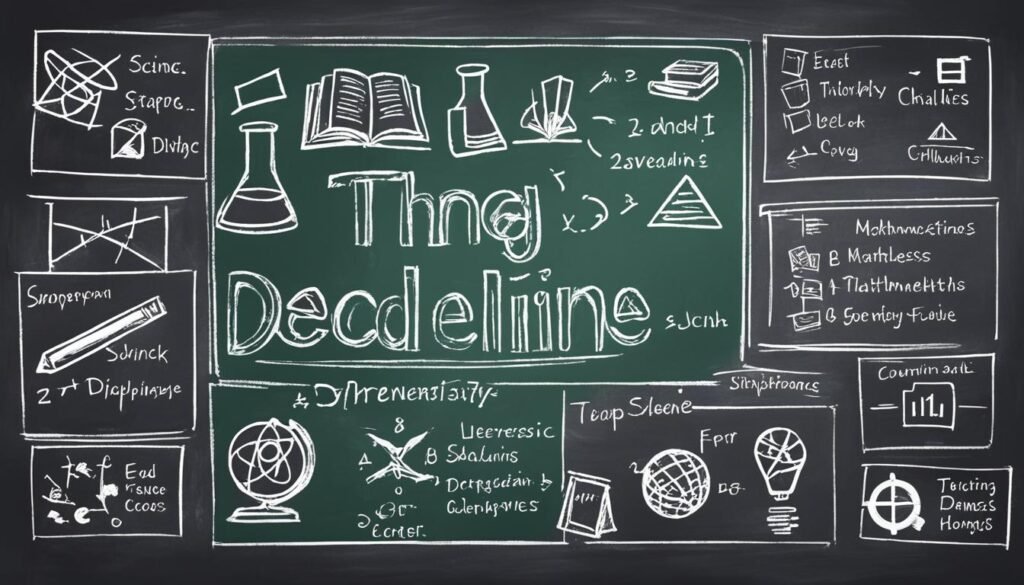
High schools offer a diverse range of core academic departments that provide students with a comprehensive education. These departments cover various subjects, such as English, Social Studies, Math, Science, and more. Each department offers courses at different levels of study, catering to the needs and abilities of students.
Course Levels:
- Honors Courses: Honors courses are designed to challenge academically talented students. These courses provide a more rigorous curriculum and require students to meet specific criteria, such as excellent academic achievement, teacher recommendation, and demonstrated interest in the subject.
- Regents Prep: Regents prep courses are focused on preparing students for the New York State Regents Examinations. These courses help students review and master the content knowledge and skills necessary to excel on the exams.
- Academic Intervention Services (AIS): AIS courses aim to provide additional instructional support to students who may be struggling with certain subjects. These courses offer targeted interventions and strategies to help students improve their understanding and performance in the academic area of concern.
Honors and AP courses are available in various subjects, including English, Science, Mathematics, Social Studies, and Foreign Languages. Students who excel academically and wish to pursue more challenging coursework can enroll in honors or AP classes to further develop their skills and knowledge.
Here is an example of the core academic departments and their corresponding course levels:
| Department | Honors Courses | Regents Prep | Academic Intervention Services (AIS) |
|---|---|---|---|
| English | Honors English Literature | Regents Prep English | English AIS |
| Mathematics | Honors Algebra II | Regents Prep Algebra | Math AIS |
| Science | Honors Biology | Regents Prep Chemistry | Science AIS |
| Social Studies | Honors U.S. History | Regents Prep Global History | Social Studies AIS |
These course levels reflect the commitment of high schools to provide a comprehensive and inclusive education that caters to the diverse academic needs of students. The availability of honors courses, regents prep, and AIS facilitates personalized learning and ensures that every student has the opportunity to excel and succeed.
The New York State Seal of Biliteracy
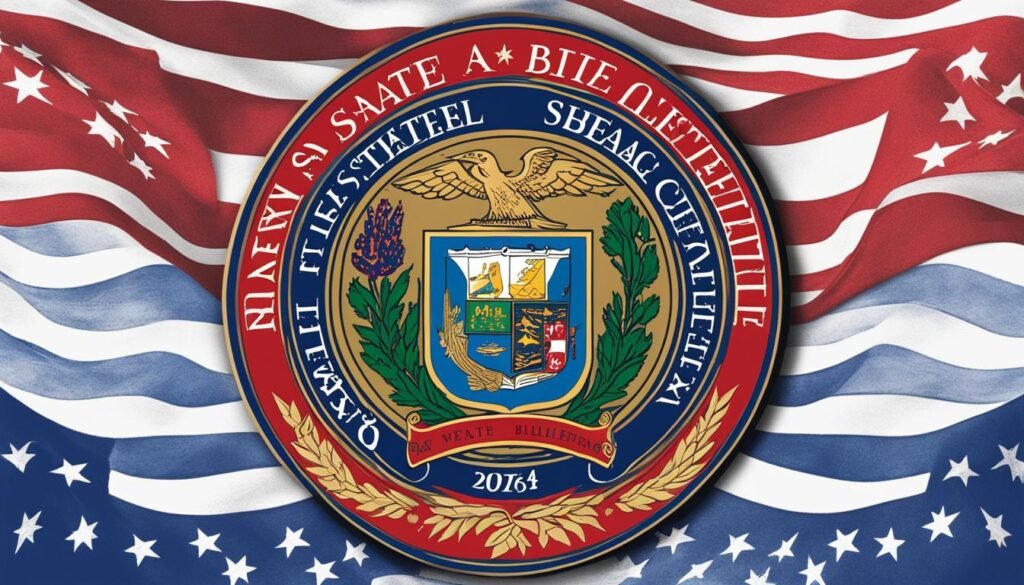
The New York State Seal of Biliteracy is an prestigious award granted to high school students who exhibit exceptional proficiency in two or more world languages, including English, upon graduation. This recognition program not only celebrates linguistic diversity but also encourages the study of languages, identifies multilingual graduates for employers and universities, and underscores the importance of language learning. To earn this highly esteemed seal, students must meet specific proficiency levels established by the NYS Learning Standards for World Languages.
The New York State Seal of Biliteracy validates the mastery of world languages and highlights the significance of developing high-level language skills. By attaining this distinction, students showcase their ability to effectively communicate, comprehend, and interact in multiple languages, bolstering their academic and career prospects in an increasingly globalized society.
“The New York State Seal of Biliteracy serves as a testament to the commitment and dedication of our students in achieving high proficiency in world languages.”
Benefits of the New York State Seal of Biliteracy
1. Affirmation of Diversity: The seal celebrates the cultural diversity and linguistic talents of students, fostering an inclusive and multicultural school community.
2. Encouragement of Language Study: The recognition program motivates students to pursue language learning, showcasing the value of linguistic and cultural skills.
3. Recognition for Employers and Universities: The seal serves as an important credential for employers and universities, demonstrating an individual’s language proficiency and commitment to global communication.
4. Appreciation of Language Instruction: The award honors language educators and highlights the critical role they play in cultivating linguistic competence and cultural awareness among students.
Proficiency Levels and Criteria
| Proficiency Level | Criteria |
|---|---|
| Intermediate | Demonstrates an intermediate-level proficiency in both languages, which includes comprehension, speaking, reading, and writing skills. |
| Advanced | Exhibits an advanced-level proficiency in both languages, demonstrating significant fluency and accuracy in oral and written communication. |
| Distinguished | Attains a distinguished-level proficiency in both languages, reflecting near-native or native-like fluency and cultural competence. |
To earn the New York State Seal of Biliteracy, students must meet the specified proficiency levels for each language as outlined by the NYS Learning Standards for World Languages. These standards serve as a benchmark to ensure consistency and rigor in assessing language proficiency across the state.
The New York State Seal of Biliteracy offers a remarkable opportunity for high school students to be recognized for their exceptional language skills. By earning this esteemed distinction, students open doors to a multitude of personal, academic, and professional opportunities, further cementing their success in the global arena.
College Credit Options in High School

High school students have the opportunity to earn college credit while still in high school through various programs. These options not only enhance their academic experience but also provide a head start in their college education. Let’s explore some of these college credit options:
1. College in the High School (CHS)
College in the High School programs allow students to take college-level courses taught by high school teachers. These courses are often offered in partnership with local colleges and universities. By successfully completing these courses, students can earn both high school and college credit simultaneously. CHS courses cover a wide range of subjects, including English, Math, Science, and more.
2. Advanced Placement (AP) Courses and Exams
Advanced Placement courses provide students with the opportunity to take college-level courses in high school. These rigorous courses follow a standardized curriculum developed by the College Board. At the end of the course, students have the option to take the corresponding AP exam. Depending on their exam score, students can earn college credit or advanced placement in specific subjects when they enter college.
3. Project Lead the Way (PLTW)
Project Lead the Way is a program that focuses on providing students with hands-on experience in STEM (Science, Technology, Engineering, and Math) fields. PLTW offers a series of pre-engineering courses that are recognized by many colleges and universities. By completing PLTW courses and meeting specific requirements, students can earn college credit in engineering and related fields.
4. Syracuse University Project Advance (SUPA)
Syracuse University Project Advance is a partnership between Syracuse University and participating high schools. SUPA offers college-level courses in various disciplines, such as English, Humanities, Social Sciences, Math, and Foreign Languages. Students who successfully complete SUPA courses can earn Syracuse University credit, which is transferable to many colleges and universities.
These college credit options provide high school students with valuable opportunities to earn college credit and get a head start on their higher education journey. By taking advantage of these programs, students can save time and money when they enter college, as well as gain valuable academic experience. Additionally, earning college credit in high school demonstrates a student’s commitment to academic excellence and can make their college applications more competitive.
Effective Study Guides for High School Students
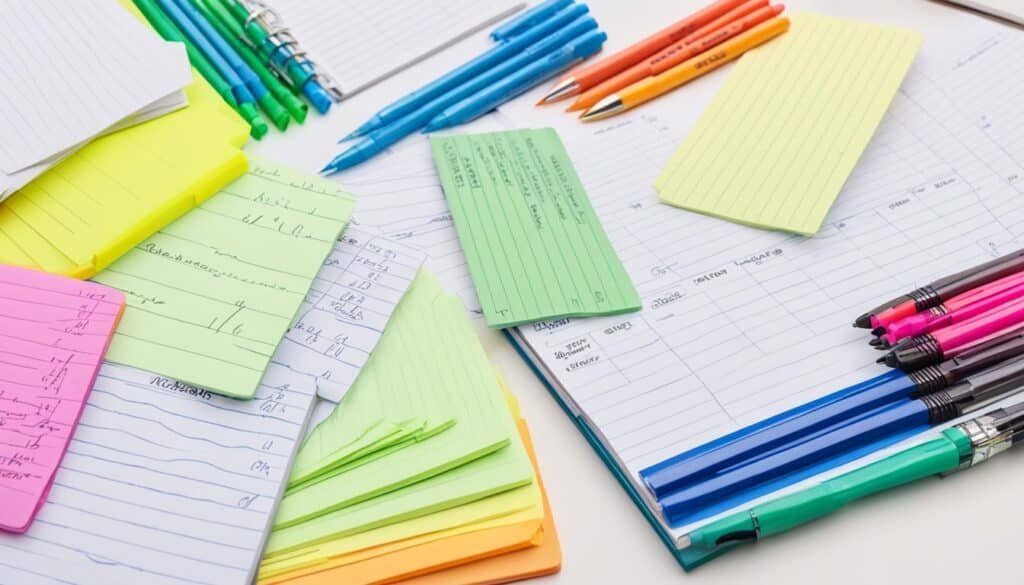
Study guides play a crucial role in helping high school students prepare for tests and exams. Unlike traditional study guides that may consist of fill-in-the-blank or bulleted lists, effective study guides for high school should be comprehensive and aligned with the objectives and vocabulary of the unit being studied. By distributing study guides at the beginning of the unit, students have sufficient time to complete them and integrate the necessary study skills throughout their learning journey.
Personalization is essential when creating study guides for high school students. Recognizing that students have different learning styles, teachers can encourage the use of visual aids, such as diagrams, tables, and charts, to make the study guides visually appealing and engaging. Online tools like Quizlet can also be utilized to enhance the effectiveness of study guides and cater to individual study preferences.
Additionally, study guides should emphasize the unit’s objectives and essential vocabulary. By focusing on these key areas, students can concentrate on the most relevant information, ensuring they are well-prepared for their assessments.
“Effective high school study guides should align with the unit’s objectives and essential vocabulary.”
When crafted thoughtfully, study guides can serve as valuable resources for high school students, aiding them in comprehending and retaining the material they are studying. They help students organize their studies, prioritize their learning, and develop effective study habits. By incorporating study guides into high school curriculum, educators can empower students to take ownership of their learning process and achieve academic success.
| Benefits of Effective Study Guides: |
|---|
| Facilitates organization and prioritization of learning |
| Promotes active engagement with the material |
| Encourages critical thinking and problem-solving skills |
| Boosts retention of key concepts and information |
| Develops effective study skills and habits |
Through the use of effective study guides, high school students can build a solid foundation of knowledge, enhance their understanding of the subject matter, and ultimately achieve their academic goals.
Test Preparation Tips:
- Start studying early and review the study guide regularly.
- Break down the material into manageable sections and create a study schedule.
- Use active learning strategies, such as summarizing information in your own words or teaching it to someone else.
- Practice with sample questions or past exams to familiarize yourself with the format and types of questions.
- Seek help from teachers or classmates if you encounter difficulties or have questions.
Incorporating Study Guides into the Classroom

Teachers have the flexibility to incorporate study guides into their classrooms in various ways. This section outlines some effective strategies for utilizing study guides and supporting students in their study guide preparation.
Spot Checking and Review
One approach is to spot check study guides for completion and then review them as a class using answer keys. This allows teachers to address any misconceptions or gaps in understanding that may arise from the study guide exercise. By reviewing the study guides together, teachers can provide additional explanations and reinforce key concepts.
Collecting and Grading
Another method is to collect study guides throughout the unit and grade them for accuracy. This helps ensure that students are taking their study guide preparation seriously and can provide feedback on their understanding of the material. Graded study guides can be returned to students, allowing them to review and study from their work.
Support and Resources
Providing support to students during the study guide process is crucial, especially for those who may need extra guidance. Teachers can offer help sheets or templates that outline the structure and format of effective study guides. Additionally, allocating class time for working on study guides allows students to seek clarification and collaborate with their peers. Emphasizing the importance of creating visually appealing and useful study guides can also help students develop effective study habits.
By incorporating study guides into the classroom and supporting students in their preparation, teachers can enhance students’ understanding and retention of the material. Study guides provide a structured framework for students to organize and review key concepts, resulting in improved academic performance and confidence in their learning.
The Benefits of Teaching Study Skills
Teaching high school students study skills goes beyond preparing them for exam success. It equips them with essential skills for future educational and career endeavors. By teaching students how to study effectively, educators empower them to become critical thinkers, problem solvers, and lifelong learners. Mastering study skills is particularly important for students who plan to pursue higher education or careers that involve training and testing.
When students are taught study skills, they gain the tools necessary to navigate the complex world of learning. They learn how to manage their time effectively, set realistic goals, and organize their study materials. These skills not only benefit their academic performance but also prepare them for the challenges they will face in college and beyond.
Critical thinking is another key skill that is fostered through the teaching of study skills. By encouraging students to analyze information, evaluate arguments, and think critically, educators enable them to approach problems with a logical and discerning mindset. This ability to think critically is essential for success in any field or profession.
Teaching study skills is about equipping students with the necessary tools to be successful not only in their academic pursuits but also in their future lives.
Fostering lifelong learning is a crucial outcome of teaching study skills. When students understand how to study effectively, they develop a growth mindset and a love for learning that extends beyond their high school years. They become self-directed learners who are motivated to continuously seek knowledge and improve their skills.
Additionally, teaching study skills helps students develop important habits and strategies for self-regulated learning. They learn how to set realistic goals, monitor their progress, and adjust their strategies as needed. These skills not only support their academic success but also prepare them for the demands of higher education and the workforce.
In conclusion, teaching high school students study skills has far-reaching benefits. It prepares them for future success by equipping them with essential skills such as critical thinking, problem-solving, and lifelong learning. By investing in their study skills development, educators empower students to achieve their goals and thrive in their academic and professional pursuits.
Authentic Assessments and Study Guide Reflection

Study guides serve a dual purpose in the classroom, not only helping students prepare for assessments but also providing teachers with valuable insights into the effectiveness of their instruction. By reflecting on study guides alongside summative assessments, teachers can ensure that the assessments align with the content taught, promoting a fair evaluation of student learning.
When reviewing study guides and comparing them to the assessment, students can see the direct correlation between the study guide and their success on the test. This process eliminates surprises and empowers students to take ownership of their learning. By recognizing the value of the study guide as a tool for exam preparation, students are motivated to engage with the material and apply their knowledge effectively during the assessment.
Furthermore, study guide reflection enables teachers to adapt and refine their teaching strategies. By analyzing student performance and identifying areas of strength and weakness, educators can adjust their instructional methods to better meet the diverse needs of their students. This continuous improvement cycle ensures that future teaching strategies are better aligned with student learning outcomes, resulting in increased student success.
“Study guide reflection allows teachers to identify gaps in their instruction and make any necessary adjustments to improve student outcomes.” – Dr. Lisa Thompson, Education Specialist
Through study guide reflection, teachers gain valuable feedback on the effectiveness of the materials and resources provided. They can assess whether the study guide adequately addresses the key concepts and skills required for success on the assessment. This feedback loop empowers teachers to make evidence-based decisions about instructional strategies and tailor future study guides for maximum student benefit.
The Benefits of Study Guide Reflection for Students and Teachers
1. Enhanced Student Success: By reviewing study guides alongside summative assessments, students develop a deeper understanding of the importance of thorough preparation and active engagement with the material.
2. Student Ownership of Learning: Study guide reflection empowers students to take responsibility for their own learning journey, promoting self-directed study habits.
3. Alignment with Teaching: By ensuring that assessments align with the content taught, study guide reflection fosters a fair and accurate evaluation of student learning and mastery of course objectives.
4. Teacher Professional Growth: Through analysis of study guides and performance data, teachers gain valuable insights into instructional effectiveness, allowing for continuous improvement and refinement of pedagogical strategies.
Study guide reflection is an essential practice that benefits both students and teachers alike. By embracing this reflective approach, educators create an environment that promotes student success, fosters critical thinking skills, and supports ongoing professional growth.
| Assessment Criteria | Reflective Questions |
|———————|———————|
| Content Alignment | – Does the study guide cover all key concepts and skills assessed on the exam?
– Are there any gaps or areas where additional content could be included? |
| Clarity and Coherence | – Is the study guide organized in a logical and easy-to-follow manner?
– Are the instructions clear and concise?
– Do the examples provided effectively demonstrate the expected level of understanding? |
| Relevance and Depth | – Are the questions and practice exercises in the study guide representative of the assessment’s difficulty level?
– Do the questions promote deep understanding and application of the content?
– Are there opportunities for students to demonstrate higher-order thinking skills? |
| Format and Structure | – Is the study guide visually appealing and well-designed?
– Does the study guide incorporate a variety of question formats to assess different skills?
– Is the study guide accessible to diverse learners? |
| Student Feedback | – Did students find the study guide helpful in preparing for the assessment?
– Were there any challenges or areas of confusion reported by students?
– How can the study guide be improved based on student feedback? |
By using this checklist during study guide reflection, teachers can ensure that their assessments are fair, rigorous, and aligned with the content taught. The insights gained from this reflective practice contribute to continuous improvement in teaching strategies and student success.
Empowering Students to Create Their Own Study Guides
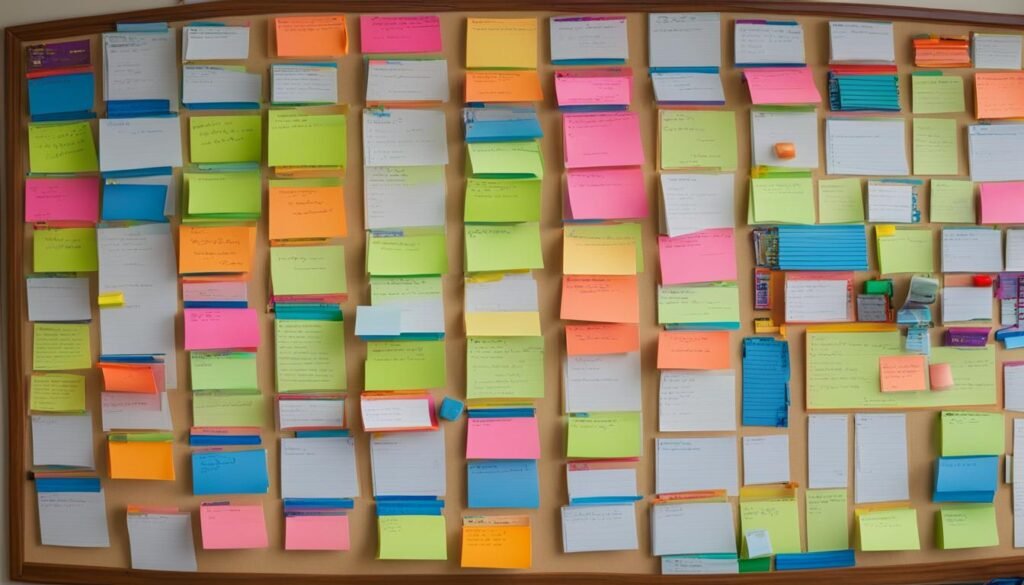
When it comes to studying, student autonomy plays a crucial role in fostering a sense of ownership and independence in the learning process. In order to promote personalized learning experiences, educators can empower students to create their own study guides. By providing them with clear objectives and essential vocabulary, students are able to customize their study guides to align with their unique learning styles and preferences. This approach not only enhances their understanding of the content but also encourages active engagement with the material.
In addition to personalized study guides, incorporating visual aids can further enhance the effectiveness and appeal of these resources. Visual aids such as Venn diagrams, tables, and charts can make study guides more visually engaging and help students better organize and comprehend information. These visual elements serve as powerful tools for visual learners and can also benefit other students by providing clear and structured representations of complex concepts.
When students are given the power to create their own study guides, they are encouraged to take responsibility for their own learning. This fosters self-directed learning skills, which are essential for success in higher education and beyond. By actively participating in the creation of their study guides, students develop critical thinking and problem-solving skills, as they have to evaluate and prioritize information to include in their guides.
Overall, empowering students to create their own study guides promotes a student-centered approach to learning, where students become active participants rather than passive recipients of knowledge. This approach nurtures their autonomy, cultivates their individual strengths, and fosters a deeper understanding of the subject matter. By incorporating personalized study guides with visual aids, educators can effectively support student learning and enhance their overall academic success.
| Benefits of Empowering Students to Create Their Own Study Guides |
|---|
| Enhances student autonomy and ownership in the learning process |
| Promotes personalized learning experiences |
| Encourages active engagement with the material |
| Develops critical thinking and problem-solving skills |
| Supports self-directed learning and independence |
| Enhances comprehension and retention of information |
| Fosters deeper understanding of the subject matter |
Conclusion
Incorporating study guides into the high school course of study is a powerful strategy that can greatly contribute to student success. By providing students with effective study guides, teachers enable them to develop essential study skills, reflect on their learning, and enhance their understanding of the subject matter.
Study guides create a structured and supportive learning environment that prepares students for the challenges and opportunities they may encounter in their academic and professional lives. Through the use of study guides, students learn valuable organizational and time management skills, allowing them to prioritize their studies and make the most of their high school experience.
Moreover, study guides encourage active engagement with the material, as students collaborate and interact with the content in a meaningful way. By personalizing study guides to suit their learning styles, students can take ownership of their education and develop a deep comprehension of the subject matter.
Ultimately, by utilizing study guides as a strategic tool, high school educators can empower students to achieve academic success, develop crucial study skills, and lay the foundation for future educational endeavors and professional achievements.
Also Refer : Explore Top Care Courses Online – Enroll Now!
FAQs
What is a high school course of study guide?
A high school course of study guide is a resource that provides information about the academic courses and programs offered at a high school. It helps students select courses that align with their interests, goals, and graduation requirements.
What courses are typically included in a high school curriculum?
High school curriculum typically includes core subjects such as English, Math, Science, and Social Studies. It also offers elective courses in various subject areas, such as the arts, foreign languages, and career-focused subjects.
What are the requirements for graduation from high school?
Graduation requirements vary by state and district, but they generally include a specified number of credits in various subject areas, such as English, Math, Science, Social Studies, and elective courses. Additional requirements may include passing certain exams or completing community service.
Can high school students earn college credit?
Yes, high school students have various options to earn college credit, such as through advanced placement (AP) courses and exams, college in the high school programs, and other dual credit programs. These options enable students to get a head start on their college education.
How can study guides help high school students?
Study guides are valuable tools that help high school students prepare for tests and exams. They provide a structured review of the material covered in class and help students focus on the most important concepts and vocabulary. They can also be personalized to suit individual learning styles and preferences.



